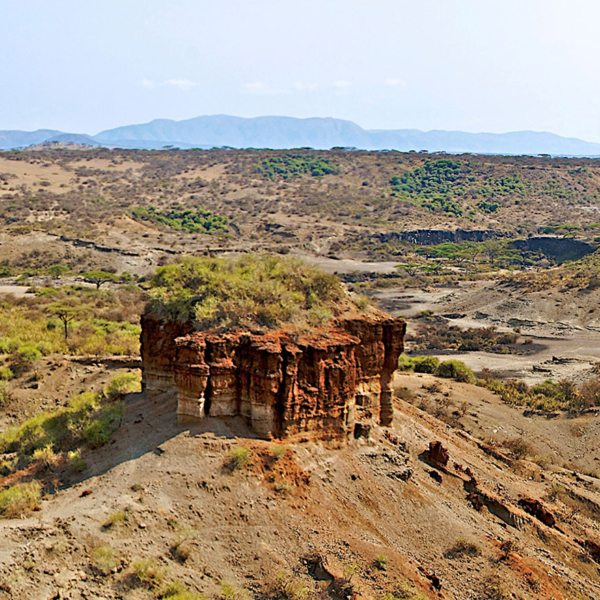The Olduvai Gorge is one of the most important paleoanthropological localities in the world; the many sites exposed by the gorge have proven invaluable in furthering understanding of early human evolution. A steep-sided ravine in the Great Rift Valley that stretches across East Africa, it is about 48 km (30 mi) long, and is located in the eastern Serengeti Plains within the Ngorongoro Conservation Area in the Olbalbal ward located in Ngorongoro District of Arusha Region, about 45 kilometres (28 miles) from Laetoli, another important archaeological locality of early human occupation.

The British/Kenyan paleoanthropologist – archeologist team of Mary and Louis Leakey established excavation and research programs at Olduvai Gorge that achieved great advances in human knowledge and are world-renowned. In July 2019, the Olduvai Gorge Monument was erected at the turnoff to Olduvai Gorge from the road which connects Ngorongoro Conservation Area and Serengeti National Park (a route traveled by safari-goers).
Eng. Joshua Mwankunda conceived the idea of erecting a monument to commemorate this significant site while also serving as a signpost and attracting visitors to the Olduvai Gorge and museum; paleoanthropologists Nicholas Toth, Kathy Schick, and Jackson Njau planned and provided life-size fossil casts at the request of the Tanzanian government, which were used by the Tanzanian artist Festo Kijo to create the two large concrete skulls.
The monument consists of two large-scale models of fossil skulls which sit atop a large pedestal with an informative plaque mounted on the side of the pedestal. The fossil skulls depicted are Paranthropus boisei and Homo habilis, two contemporary species which were first discovered at Olduvai Gorge. The large-scale models created by Kijo are each 6 feet tall and weigh 5,000 pounds. The monument project was funded by the Stone Age Institute and the John Templeton Foundation, in partnership with the Ngorongoro Conservation Area Authority (NCAA).
The Olduvai Gorge Museum, located 5 km beyond the monument, is situated on the rim of the gorge at the junction of the main gorge and the side gorge. As one of the largest onsite museums in Africa, the museum provides educational exhibits related to the gorge and its long history.
